The NFL’s Biggest Position Battle Might Be in Denver
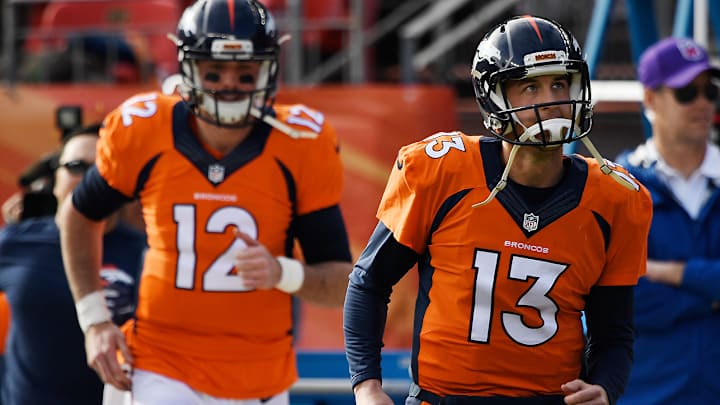
By the time his two quarterbacks reported for the offseason program on April 10, new Broncos coach Vance Joseph had watched every NFL game rep Paxton Lynch and Trevor Siemian had taken. Joseph had seen all their practice reps too. He’d even talked to their college coaches.
And that morning, he was there to tell them—and everyone else in the room—that all of it was about to be marginalized.
“I told the entire team, from this moment on, everyone gets a clean slate. And that includes the quarterbacks,” Joseph said coming off the field this week. “So how they play from this moment on is what I’m concerned about, not last year, or college. I’m concerned about this moment, moving forward, who the best guy is for our football team.”
It’s time for organized team activities, the time of year when clubs begin to take shape. That means the start of 7-on-7, 9-on-7 and 11-on-11 work and, with the rules strangling what training camp used to be, OTAs and the mandatory minicamp tied to them have become vital in ramping up before summer. The Bills, Chargers and Cardinals are underway. Denver is among the teams starting next week.
So for everyone, it’s time to start figuring out who’s going to play in the fall. And when it comes to that, no one has a bigger decision to make than Joseph, still in his first few months back in Colorado, where he was once the University of Colorado’s star quarterback.

In this week’s Game Plan, we’ll tell you how the identity makeover of the Jaguars could ride on a big man, as much as the guy he’ll be blocking for; we’ll give you more rookie minicamp stars; we’ll explain why the Pats hanging on to Jimmy Garoppolo is a big deal; we’ll examine a key complication in the Raiders’ looming negotiation with Derek Carr; and we’ll lay out the landscape for next week’s league meeting.
But we’ll start by examining those position battles, because they begin now and not in late July. Denver is a good place to begin because it’s not every day that you see such a win-now roster fluid at arguably the two most important spots in any football operation—head coach and quarterback.
Joseph understands the position he’s in. Last year he was part of Dolphins coach Adam Gase’s teardown in Miami. This is different. Denver won the AFC West five straight years before missing the playoffs in 2016, and much of the club’s 2015 championship core is intact.
But that doesn’t mean Joseph can’t apply things he learned during the Dolphins’ facelift. And the No. 1 factor, as Joseph sees it, is making the facility the place to be. “The biggest thing we did as far as culture change,” Joseph recalls, “was making it an environment where [Dolphins players] loved to come to work. We didn’t have a bad day last year.”
The idea is that new systems on each side of the ball—the change will be more drastic on offense than defense—should work to energize the vets. The hope is that dialing up competition will generate juice all the way around.
“There’s going to be a scoreboard on everything,” Joseph explained. “It’s going to be a grading system on everything, from how many loafs to how many missed tackles to how many turnovers we can force to how many touchdowns we throw for or run in. It’s going to be a grading system on every drill we do. … We want our offense to develop a confidence and a swagger that says they can go out and play with anyone.
“And defensively, we want to continue our culture of playing dominant defense. I think competition, that’s going to be the first thing that’s different with OTAs, starting Tuesday, for the players.”
For a team with a lot in place—a revamped offensive line, good skill-position talent and a defense stocked with in-their-prime stars—that leads us to the question that will determine the ceiling for the early-era Joseph Broncos. What will they get out of the quarterback spot?
Joseph’s feel for the two is just what you’d think. He says Siemian plays “a game of patience, it’s a game of confidence. He is in control. ... He’s a smart guy, he throws the ball where it should go most of the time, he’s got a high football IQ.” And on Lynch, Joseph says, “The physical ability is there. He’s a first-round pick, great height, great arm talent, great mobility.”
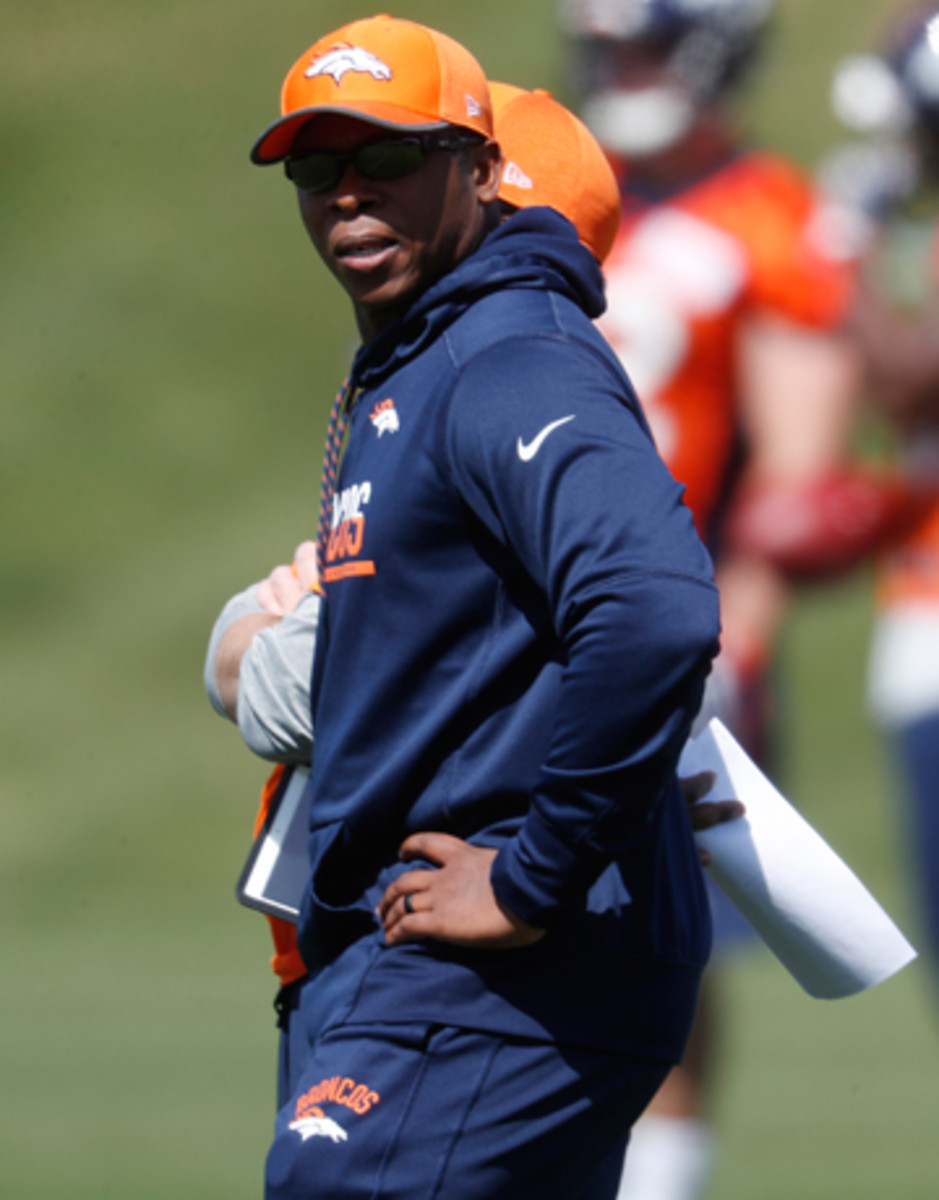
But where those two stand going into OTAs isn’t nearly as important as where they’ll be coming out of camp in August. The coach repeated what he’s said before—there’s “no deadline” on making a decision. “If it goes down to the final week,” Joseph says, “I’m not opposed to that, because our goal is only to have the best guy win the job.”
The criteria is a little clearer.
“I’d say decision-making is going to be a major factor in who wins the job,” Joseph said. “That’s the position in the NFL—the guy who makes great decisions with the football, not turning the football over, and the guy who lets his teammates play for him, that’s the guy I want to lead our football team. Obviously, ball placement in the pass game, the ability to get us into the best play, those things are important.
“But it comes down to decision-making—that’s the biggest factor in this decision I’m going to make.”
Joseph knows how significant this is. He’s got a prideful defensive group that has seven players who are: A) making more than $5 million per year; and B) between the ages of 27 and 31. He has cornerstone offensive weapons in Demaryius Thomas and Emmanuel Sanders. He has a boss, John Elway, whose philosophy in team-building, he once told me, has been not “win now” but “win from now on.”
The upshot is that Joseph has a new/old coordinator in Mike McCoy who’s won with all different styles of quarterbacks—from Tim Tebow and Jake Delhomme to Peyton Manning and Philip Rivers—and should be able to build the offense around the strengths of the cerebral Siemian or the talented Lynch all the same.
And yes, there’s pressure to get that call right. But there’s pressure in general, too, and everyone embraces it.
“Winning nine games and not going to the playoffs last year was not good enough,” Joseph said. “And everyone’s motivated, everyone’s engaged in trying to make this thing better moving forward. So that’s what I’ve noticed from day one from every guy in the building, every player, every person who works here, from the chef to the personnel people—last year was not good enough.
“Absolutely, they took it personally. And everyone’s working to make it better.”
So the Broncos just have to figure out who’ll play the most important position in team sports. No big deal.
Of course, Joseph isn’t the only coach with a big call to make. Here are eight more that jump out as OTAs get going …
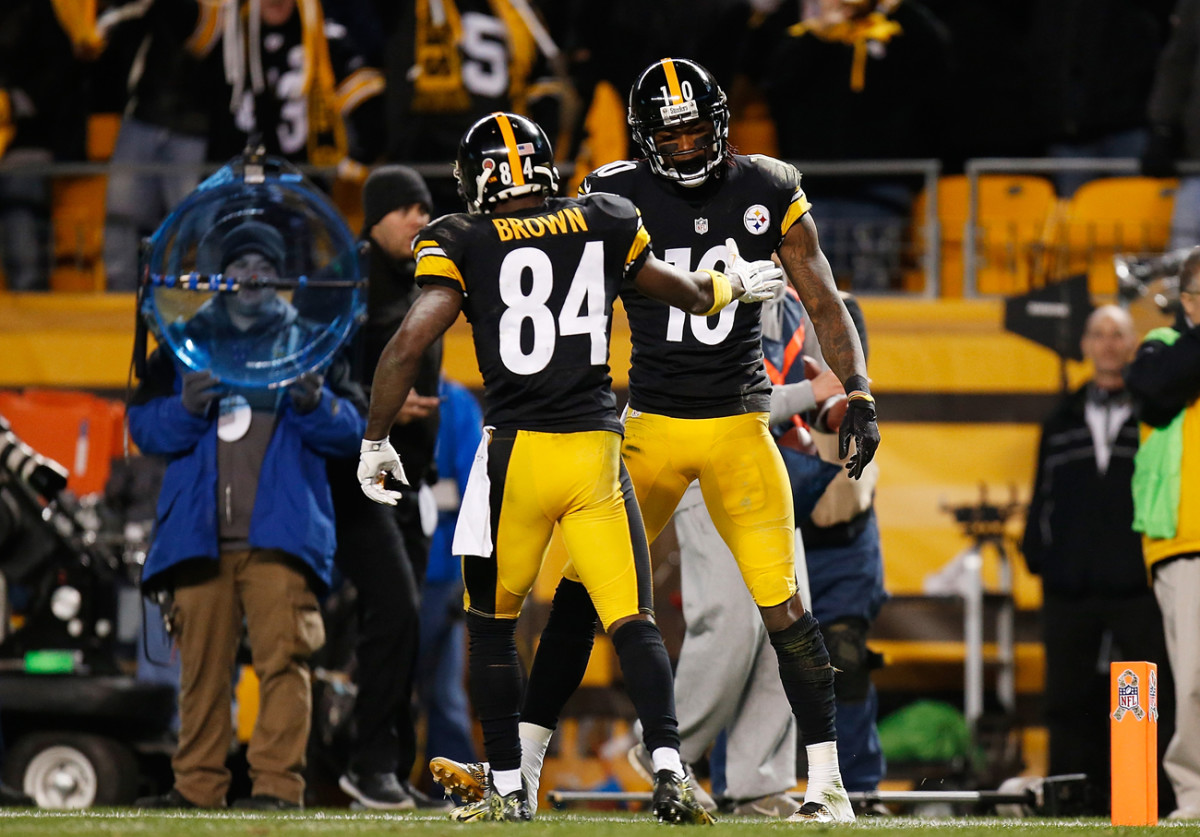
• Raiders cornerback. Oakland’s Achilles heel last year was in the secondary, and that’s why they need rookie Gareon Conley to challenge for playing time quickly and, ideally, unseat veteran Sean Smith. If the Raiders can improve on the back end—and rookie safety Obi Melifonwu can help there too—their defense stands to grow up quickly.
• Patriots pass-rusher. New England’s splashy offseason left the roster with few questions, but one does stand out. Who is going to pressure the passer? Chandler Jones and his replacement, Chris Long, are gone. So newcomers Kony Ealy (ex-Panther) and rookie Deatrich Wise will vie for snaps with veteran Rob Ninkovich and the promising third-year man Trey Flowers.
• Seahawks left tackle. Seattle added Jags washout Luke Joeckel and drafted LSU’s Ethan Pocic, and 2016 first-rounder Germain Ifedi should improve, so they have addressed the issue to some degree. The next question: Who plays where? And then: Will it be incumbent George Fant or Joeckel protecting Russell Wilson’s blind side?
• Cardinals cornerback. Patrick Peterson is on one side, and who is on the other has become an age-old question here, and will be pivotal to an improving D reaching its potential. Brandon Williams, a 2016 third-round pick, and veteran Justin Bethel will get the first cracks at it. But don’t be stunned if we see second-round safety Budda Baker moonlighting at corner too.
• THE FINE PRINT OF ROOKIE CONTRACTS: Andrew Brandt on the reality behind those contract numbers
• Cowboys pass-rusher. This was Dallas’ chief soft spot in 2016, but there’s reason to believe the Cowboys will improve with DeMarcus Lawrence healthy, Benson Mayowa back, and rookie Taco Charlton coming in. How much better is the question, since there still isn’t the “War Daddy” that Jerry Jones covets in the group.
• Texans quarterback. Houston is right there with the Broncos as a team with a lot of elements working around the quarterback position. The Texans’ affection for Tom Savage is genuine, but he’s had trouble staying upright. And if they’re going to play rookie Deshaun Watson, Bill O’Brien will likely have to dial back the complexity of his scheme.
• Steelers receivers. This one should be fun. Antonio Brown’s role is clear. Will Martavis Bryant keep out of trouble? Can rookie Juju Smith-Schuster assimilate quickly to the pro game? Will Sammie Coates bounce back in Year 3? Where does last year’s surprise, Eli Rogers, fit? Lots of talent here. We’ll see how it shakes out.
• Vikings running backs. Ex-RaiderLatavius Murray is on the books for more than $4 million this year, and Minnesota traded up in the second round for Florida State’s Dalvin Cook. Obviously, there are big shoes to fill here, but the versatility of both could help open up coordinator Pat Shurmur’s offense, and make protecting Sam Bradford a little easier on the line.
• TEN THINGS I THINK: Emily Kaplan on career breaks, Hard Knocks and position battles
* * *
FIRST AND 10
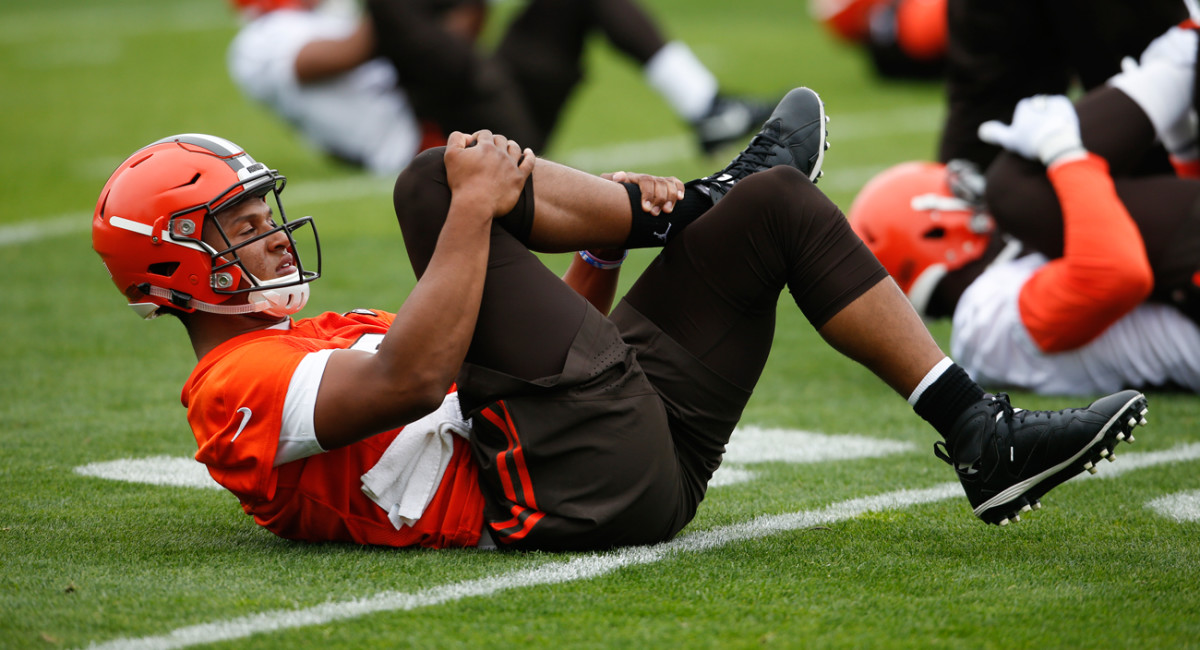
1. The Tom Brady concussion story (we’ll touch on it later, too) is a big one. But anyone who thinks that players aren’t actively concealing head injuries on a regular basis is, at best, naïve. It’s not any kind of heroic act, but it happens. A lot.
2. Rookie quarterback DeShone Kizer had a good weekend in Cleveland, but he’s got a long way to go. It starts with a focus on finding consistency in his mechanics. That was a knock on him coming out—that his mechanics tend to crumble when he’s pressured.
3. The domestic case involving Cowboys cornerback Jourdan Lewis still has to play out, but the team already loves what it’s seen on the field. The third-rounder stood out at rookie camp, showing the instincts, feet and competitiveness to step in and play right away.
4. We mentioned last week that the Eagles see anything they get from second-round corner Sidney Jones in 2017 as a bonus. Good news: Third-round corner Rasul Douglas is impressing early, which could help quell temptation to push Jones.
5. While we’re there, wideout Alshon Jeffery has made a great early impression on the Philly coaches. He’s in shape—one staffer said he looks like a “freak”—and all this jibes with what Bears coaches were saying about him last summer, before his 2016 went sideways.
6. The Rams’ focus in the 2017 draft was finding players who were just that—players rather than athletes. Early signs are good that it’s paying off with wide receiver Cooper Kupp, who was an uber-productive collegian.
7. The Colts didn’t have their top pick, Malik Hooker, at rookie camp. The Ohio State safety had groin and shoulder surgery in January. But as I hear it, everything remains on track to have him on the field for the start of training camp.
8. So by now, does it seem like we’re talking highly of a lot of rookie defensive backs? Here are two more: Green Bay corner Kevin King and safety Josh Jones. The Packers believe already that both will be able to contribute from Day One.
9. The Cardinals seem to hit on small-school third-rounders (defensive end Rodney Gunter, wide receiver John Brown). And judging by returns from Arizona’s minicamp, ex-Grambling wide receiver Chad Williams might be next. He’s big, has great hands, ran a 4.41 at his pro day, and was the highest-drafted guy not invited to Indy. Keep an eye on him.
10. Plenty of NFL people thought that if the Falcons couldn’t trade up for a pass-rusher, they’d take Utah safety Marcus Williams at 31 and make him Dan Quinn’s new Earl Thomas. So the Saints did well to get their center-fielder at 42.
* * *
FOUR DOWNS
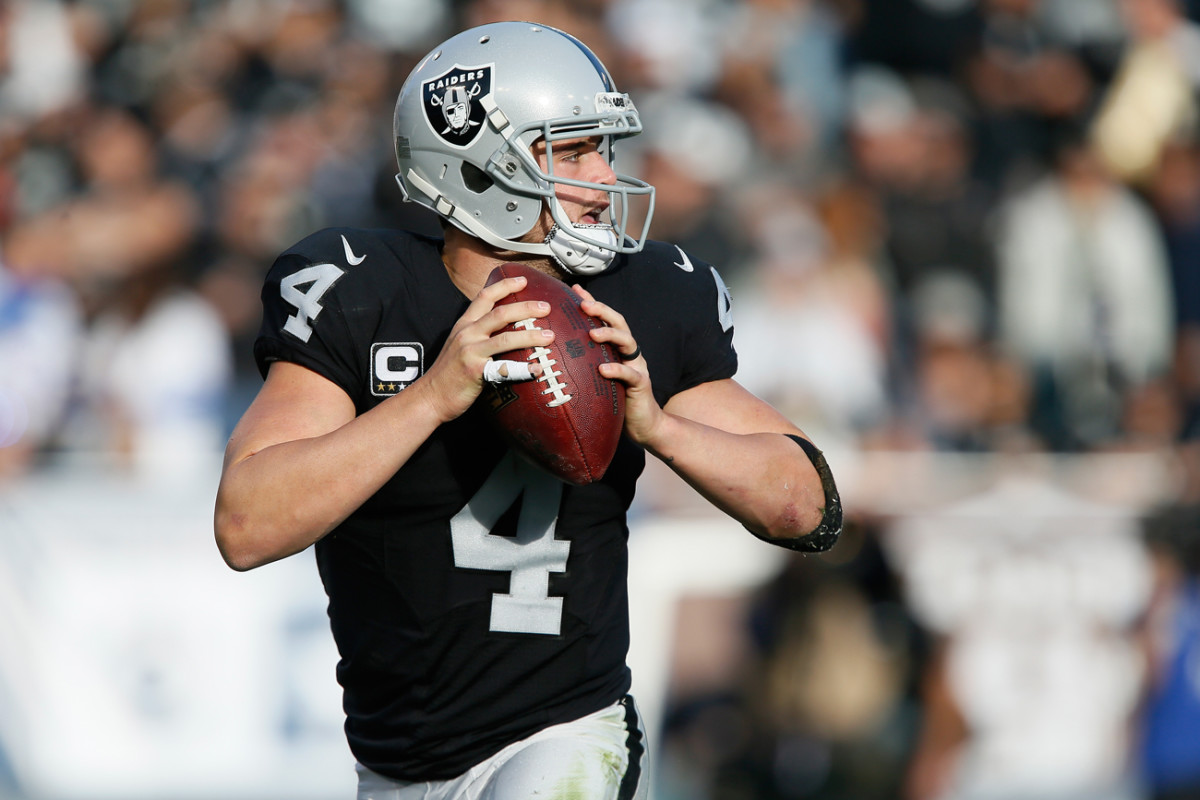
1. The problem with a Derek Carr contract extension. My old colleague at NFL Network, Mike Silver, had news the other night that Derek Carr is growing frustrated with the lack of discussion between his reps and the team on a new deal that will keep him a Raider well into the next decade. The timing is understandable, given that Oakland will return to the practice field for the start of OTAs on Monday, and the practice field is where one of Carr’s draft classmates (Teddy Bridgewater) saw his financial security go up in smoke. And these, of course, are complicated deals that, in essence, tie the franchise’s future to a single player.
The good news for the Raider brass? At the very least it doesn’t seem like there’s much to question with Carr as a person or a player. But that doesn’t mean it’ll be easy, and there’s an overlooked (at least to this point) reason why that has nothing to do with the team’s impending move to Vegas: The collective bargaining agreement expires after the 2020 season. For a megadeal like this one, that could complicate a player’s willingness to do a traditional contract, because there’s no way to tell what the financial landscape of the NFL will look like in 2021 or 2022 (which would be the fourth and fifth years of a potential Carr extension).
Want to draw up a traditional deal? I was able to do that, talking to a few people who know how these negotiations work. So here’s a rough outline: Five-year, $125 million extension; $70 million guaranteed; $40 million signing bonus; $41.15 million in 2017; $59.15 million over two years; $77.15 million over three years; six-year total of $126.15 million. And that all sounds good, on paper. But the concern would be that, come the final two years of the deal, Carr is looking at a contract that’s badly outdated.
So what’s the solution? The team and player could do a three-year extension, which would expire when the CBA does after the Raiders’ first year in Vegas. That would be uncomfortable for the team in that Carr would be up again just before his 30th birthday and could expose the Raiders to risk if franchise-tag rules were to change. Or the team and player could negotiate the first three years, and then do years after that with money tied to percentages of the salary cap, something that would be groundbreaking and, of course, would have to pass muster with the league’s management council. Or the sides could just do a traditional deal. The bottom line here is this is the first of these big quarterback contracts to have this element introduced. The final season of Andrew Luck’s deal is the first after the expiration of the current CBA. Whether or not Carr’s goes deeper than that could certainly affect more than a couple quarterback deals in the years ahead.
• MONDAY MORNING QUARTERBACK: Peter King on the new leadership team in Buffalo
2. Game presentation at the top of the league’s agenda.Next Tuesday, NFL owners will convene for their one-day spring meeting in Chicago. What they’ll discuss there should have an impact on what is on your TVs in a few months. Accelerating the pace of games was on the docket at the annual meeting in March, and there was agreement among the clubs that the league should push forward with change. It has. At this point the details have been fleshed out with the networks, which are on board.
There are a few things you can expect to see. Most noticeable will be the reduction in commercial breaks, with the target being to cut the number to 4-5 per quarter while eliminating the “double-ups” (touchdown, commercial, kickoff, commercial, new possession) that commissioner Roger Goodell talked about in March. Second, there are the much-discussed changes to expedite the replay process, both through the centralization of calls to New York and the practice of arming officials with tablets on the field for reviews. Third, there’ll be a few rules tweaks—one that’s gained steam is the idea of putting a play clock on the extra point. So I’d expect we’ll probably learn some more firm details on the plan next week.
There are also the leftover rules proposals that were tabled in Arizona two months ago. The expectation is that overtime will be cut from 15 to 10 minutes, and there should be more discussion too on changing the celebration penalties, with Goodell having now talked to a cross-section of players about it. Add all of that up, and there’s not a lot of negative, so we’ll drop this one on you last: There’ll be a labor update too, with this being the first time the owners have gathered since the news emerged that the union had set up a strike fund.
3. Jaguars’ tackle situation worth watching.A couple years ago, in talking with on-the-ground college scouts in the South, a storyline emerged. There were two young left tackle prospects in the SEC West who both had a shot at going at the very top of the NFL draft. One was Laremy Tunsil of Ole Miss, who likely would’ve gone in the first five or six picks in 2016 if a video of him taking hits from a gas-mask bong didn’t emerge on his draft day. The other was Alabama’s Cam Robinson, the rare linemen who started from the outset in Tuscaloosa, and someone who seemed to bring just about everything to the table physically. Yet, there Robinson was on day two of this year’s draft, available for the Jaguars to snap him up at 34. His lukewarm stock was something I wondered about in the weeks leading into the draft, and so this week I went looking to figure out why the 6'6", 322-pounder fell to Jacksonville.
“I didn’t think he was as great his sophomore year, but as a junior he played well,” said one AFC scouting director. “Athletically, he’s good enough, he’s a great bender. Is he an elite left tackle? No. But he can be an elite guard or an elite right tackle. He’s going be a good player, and he’s every bit as good as the guy the Giants took a couple years ago at 10—he’s a better athlete than [Ereck] Flowers. I think the thing people were most scared of was the mental stuff, the false starts on film, things of that nature. We weren’t scared of that so much, but he’s probably going to be a one-position guy early on. He’s not dumb. He knew his whole offense, knew the calls, the schemes. But when we tried to install something here and teach it to him and asked him to give it back to us, he wasn’t nearly as strong. When you get an offensive lineman, you want him to be able do to that, so it’ll just take some time.”
There were also the weapons and marijuana charges on Robinson, but those were dropped last summer, and character didn’t seem like an enormous concern. So long-term, it seems like this could be a home run for the Jaguars. While Branden Albert is staying away (he wants his contract redone), Jacksonville can look at Robinson at left tackle. And if/when Albert comes back, they can flip Robinson to the right side. And having those two together would, at least on paper, bolster the identity about-face the Jags have looked to undergo this offseason. Fourth overall pick Leonard Fournette is very much a part of it, too.
4. Is Daryl Washington worth a shot for someone? Because he long ago fell into the abyss that guys like Josh Gordon and Justin Blackmon now find themselves, it’s really easy to forget how good linebacker Daryl Washington was at his peak in Arizona. He made second team All-Pro in 2012, got a monster contract extension, then was a Pro Bowl alternate in 2013 despite being suspended for the first four games of that season. “From what I remember, he was an explosive athlete that was loose and limber,” said one pro scouting director. “He could run, chase and hit guys, with really good length, and he matched up well with running backs and tight ends in coverage. He had game-wrecking ability.”
Since we last saw him, Washington has served multiple suspensions under the substance abuse policy that have kept him off the field for three consecutive seasons, and he pled guilty to aggravated assault charges stemming from a 2014 incident that left the mother of his child with a broken collarbone. He was reinstated in April, and the Cardinals released him shortly thereafter, and he’s 30 now. He told TuneIn’s Brian Webber and Kordell Stewart that he’s a changed man, and went so far as to claim he’s a better player now too. Will someone take a chance on him? “It would have to be a team with a strong locker room,” said our scouting director. “You’d have to allocate major resources to make sure everything checks out with him.”
I say this often—in the NFL, second chances are a function of talent. It’s why the Steelers have been so patient with Martavis Bryant. It’s why the Browns have been so hesitant to pull the plug on Gordon completely. And it’s why, in this case, it wouldn’t surprise me in the least if more than a few teams are doing background work on Washington right now. If you remember how good he was, you know why, and it’s not because teams want to help a guy who’s had plenty of demons to fight.
* * *
OFFSEASON LESSON TO TAKE WITH YOU
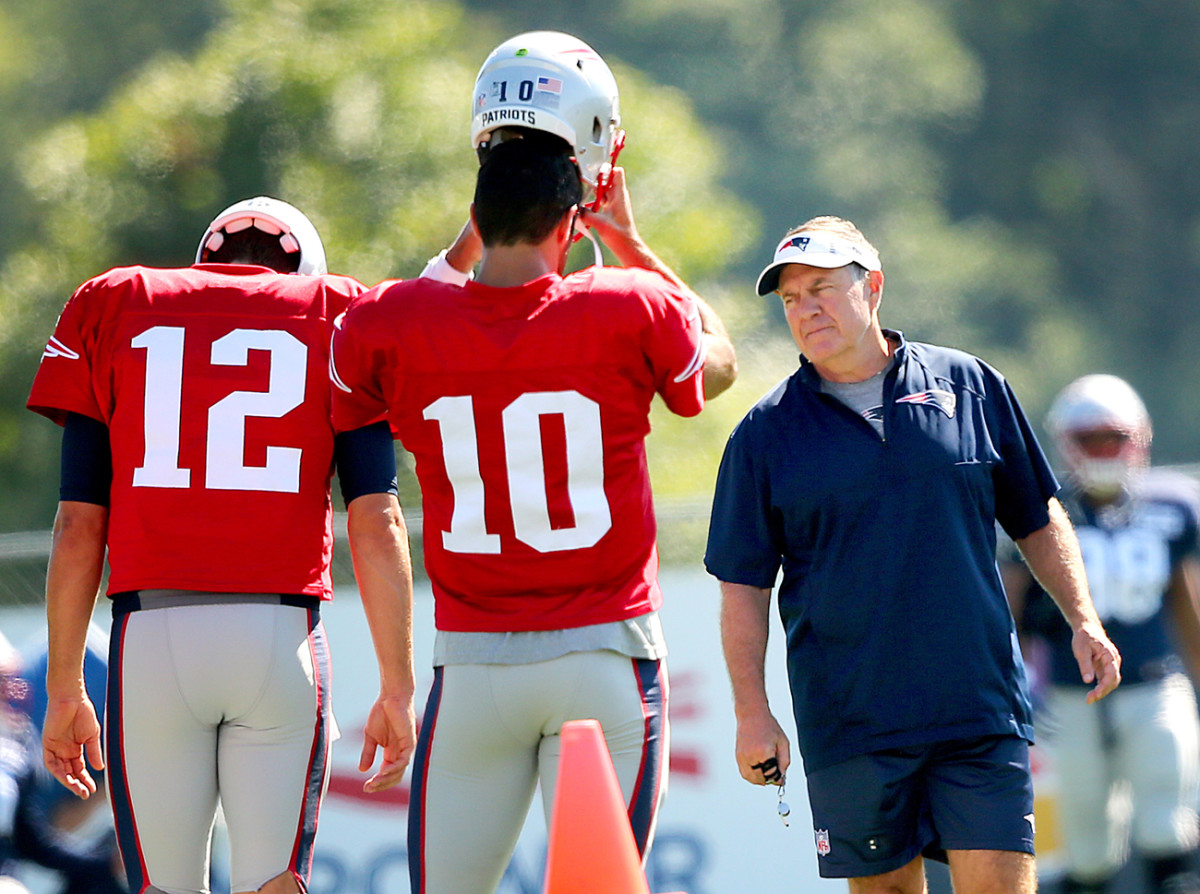
The biggest move of the past month might be the one that wasn’t made.
The Patriots didn’t trade Jimmy Garoppolo. Not only that, but as I understand it, teams that approached New England about its backup quarterback were simply told that the 25-year-old was not available. Could someone have completely blown away Bill Belichick with an offer? Sure. But other clubs were under the impression that the Patriots had zero—ZERO—intention of moving him.
There was a common theme that I heard over the past week when I asked around about what keeping Garoppolo means, and one AFC coach did a particularly good job of articulating it directly: “It made me think the Tom Brady situation isn’t what everyone thinks it is. Bill [Belichick] does unconventional things. Maybe he trades Jimmy during the season. Or maybe he keeps Jimmy and says good-bye to Tom after the year.”
I don’t doubt Brady will be able to maintain the level he played in 2016, and if he does I don’t think Belichick can trade him.
But it’s important now to look at exactly what the Patriots let go in holding on to Garoppolo, with the final year of the 2014 second-round pick’s rookie deal upon us. And we can take this one step by step:
1. Garoppolo was outstanding in real game action just nine months ago, and that matters. If he doesn’t play a meaningful snap in 2017, there’s the natural inclination to let his September 2016 play slip from your consciousness. If he does play in an emergency, and isn’t as good, it could hurt his value.
2. The quarterback market was down in 2017. The top veteran available was Mike Glennon, and the draft class at the position was probably the weakest in four years. Teams I’ve spoken with believe Paxton Lynch, the 27th pick in 2016, would’ve been the first QB taken this year. All that makes Garoppolo more attractive. Next year? Sam Darnold, Josh Allen and Josh Rosen make up what’s expected to be a much stronger draft group, and Kirk Cousins could be a free agent too.
3. Garoppolo is on the books for $895,000 in 2017. So a trading team could either play him at that number and then franchise him at around $22 million next year, or use the low figure as leverage to negotiate a long-term deal. Next year, the Pats would have to tag him (which would mean they couldn’t tag Malcolm Butler) and a trading team would have to not just deal picks for him, but also take on that $22 million figure, knowing it’d give Garoppolo’s side the hammer in talks on a long-term deal.
So to summarize, this year the Patriots held an asset that was peaking in trade value, and one that could depreciate significantly over the next year. And so there’s your off-season lesson for this week: Having a good young quarterback on your own roster is more important than what he’s worth as an asset.
We saw that in Philly last year, with the Eagles investing in both Sam Bradford and Carson Wentz. We saw it this year, with the Bears maneuvering for Glennon and Mitch Trubisky. And we see it in New England, where the Patriots had the chance to reap a blockbuster haul for Garoppolo, with the greatest quarterback ever in place as their starter, and they basically told the rest of the NFL, “Nope. We’re good.”
And that’s where all of this really gets interesting with Brady. Everyone saw what his wife, Gisele Bündchen, said Wednesday morning, and it ties back to what we’ve been talking about when it comes to the football mortality of the soon-to-be 40-year-old.
Again, I don’t doubt that Brady is capable of being different than any quarterback has been into his 40s, because his determination to pull it off has been maniacal, in how he trains and eats and lives. I remember talking to him about it a few years ago, and I know how plain his outlook, at its root, is on this: If I do things the way they’ve always been done, then I’ll get the same results everyone else has.
So he’s sought out different answers, and that’s why it would hardly stun me if he’s the same guy at 41 or 42 as he was at 39.
But I also know that there’s no precedent for it, and I know how pragmatic Belichick is as a leader of his football operation. That tells me that Belichick’s approach to this one is probably along the lines of, If works out that way, then great, but we can’t count it. So Garoppolo is still a Patriot, and he is one at the risk of the franchise losing out on a huge opportunity to cash in a valuable chip.
Whether Belichick will look back on that with regret is anyone’s guess. But the move, or non-move, he’s made tells you plenty about what he thinks of Garoppolo, the respect with which he regards the aforementioned precedent, and the level to which he’s willing to protect his franchise’s future at the most important position on the field.
• Question or comment? Email us at talkback@themmqb.com
